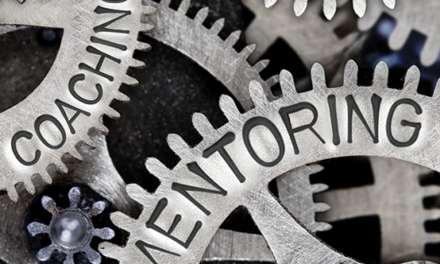Strategies must be ever evolving in service of the changes they’re intended to support.
A suburban district has seen its demographics change considerably over the past decade. With more poor students and more English language learners and the advent of new state standards, literacy scores in the district have plummeted. The superintendent has given her principals varying degrees of autonomy to improve their literacy outcomes. One elementary school principal buys a new set of classroom libraries and hires a reading tutor with Title I funds. At another elementary school, the principal encourages teachers to lead their colleagues in a collaborative process aimed at learning how they can change their teaching practice in order to engage children who may be of a different race and background.
Which do you think is the easier route? The more effective path? Which one do you think most schools follow?
Buying a classroom library and hiring a reading tutor are technical changes. Technical work usually means someone is applying an actual solution, often one devised by someone else, and they are usually necessary as we seek to improve teaching, learning, and outcomes. Getting teachers to change their practice is an adaptive change, the kind of process that requires someone to undergo some personal transformation. Adaptive change is essential for school systems to embrace — but it is a much more complex undertaking.
The road to school reform is paved with technical solutions to adaptive problems. The past 15 years of education reform have been rife with what I call “if there were just” solutions that go something like this:
- If there were just no teacher unions, then we would have accountability, and test scores would improve;
- If parents could just choose their own school, then market forces would drive improvement;
- If superintendents were just like businessmen, then we’d have increased efficiency and better return on investment;
- If parents were just more involved and cared more about their child’s academics, then we’d see improved achievement.
And so on and so on and so on. Some of these arguments have merit in certain contexts, but none of them stand alone. Moreover, without a strategy and system that ensures laser-like focus on teaching and learning through a social justice and equity lens, technical solutions will remain necessary but not sufficient.
In the coming months, I hope to show how technical and adaptive solutions are intertwined in service of scalable systems solutions that lead to improved teaching and learning and outcomes for all children. I’ll point to research and the experiences of school district leaders to help educators, policy makers, and others understand the complexity of change in the schoolhouse. I’ll also elucidate on the six design principles that I believe are essential to attend to in order to maintain systemwide focus on what Richard Elmore calls the instructional core, the interaction between teachers and children in the presence of content.
Scaling good practice
To scale good practice and increase achievement, leaders must focus on principles, not programs. Too much of the conversation about scale in public education is actually about replication. A program works in one school so the school board says every school should implement the same approach. A principal has been successful in increasing student achievement so the superintendent hires her as the assistant superintendent overseeing schools and tells her to make all the schools do the same thing.
Scale is not about simply taking one set of actions (technical solutions) and imposing them in another context. Rather, scale depends on a set of principles that enable leaders to ask better questions. Context matters, and system design principles help leaders and stakeholders organize reflection and action in a way that works for their local context.
The six design principles for understanding and implementing systems-level change from the classroom to the boardroom are:
- Values. What do we believe about students, families, and children, and why?
- Governance. How do we make decisions, and who’s involved, both formally and informally?
- Resources. How do we allocate time, people, and money according to our needs and vision?
- Content. What do children need to know and be able to do, and what do adults need to know and be able to do in service of children? How do we measure our progress against our expectations?
- Talent. Who is doing the work, and what do they need to be successful professionals?
- Culture. How do we interact with each other and our community in service of our goals?
Adaptive change rests on asking the questions above and constantly engaging in what Chris Argyris (1977) refers to as the “double loop of learning” so that schools can continuously improve. Leaders must be absolutely clear about their theory and strategy for change. As a leader, how do you think change happens, and what actions will you take to enact that strategy? In John Kotter’s 2012 Harvard Business Review article, “Accelerate!,” he describes the primacy of strategy as a lever for change. “Strategy should be viewed as a dynamic force that constantly seeks opportunities, identifies initiatives that will capitalize on them, and completes those initiatives swiftly and efficiently,” he wrote (p. 3-4).
This conception of strategy is far removed from the way most school systems operate. Strategic planning in school districts and schools typically looks like this: Over about a year, a new superintendent convenes a stakeholder group, surveys the community, and reviews data. The stakeholder group develops mission and vision statements, many goals, strategies, action steps, and perhaps metrics. The school board approves the plan, perhaps spending a lot of time editing the mission and vision statements. At the same time, the assistant superintendent for business develops a budget, sometimes in concert with the strategic plan, sometimes not. School improvement teams do their annual planning during the summer, sometimes in explicit alignment with the larger systemwide plan, sometimes not.
The state may require an annual “master plan” submission intended to address standardized test scores, facilities, and financial/operating issues. Perhaps each central office has a plan aligned to the district strategic plan, rarely are they constructed from the ground up to reflect the needs of schools. At some point, someone puts the plans in a couple of nice binders and parks them on a shelf or maybe loads the documents onto the web site under a tab marked District Strategic Plan. A few years later, a new superintendent or principal comes in, and the process starts anew.
What if the change strategy instead was conceived in terms of adaptive work that leverages the creativity of educators closest to the work? After all, those who are closest to the problem are best suited to have the solutions. When Larry Leverett was superintendent of Greenwich, Conn., he and his team created a “green sheet,” a one-page strategic plan summary that clearly showed the district’s mission, vision, and goals. The document was on every chair for the back-to-school convening so every employee could see where the district was heading. It didn’t delineate every action that every system employee would take but rather the mission, vision, values, non-negotiables, and metrics. I took that as inspiration when I became superintendent of Montgomery County (Md.) Public Schools and asked a stakeholder group to create a two-page Strategic Planning Framework (SPF) (www.montgomeryschoolsmd.org/framework/).
The SPF was intended to communicate our core values and our non-negotiable stakes in the ground for what we expected kids to know and be able to do and what adults were expected to do in service of children. The framework also was intended to spark innovation at the school level by empowering school communities to develop strategies and action steps that worked for them within their context. This was an attempt to organize change around what Kotter refers to as a “dual operating system” approach (2012).
As schools and districts are seeking to transform to better serve all children in today’s complex world, leaders must ask critical questions about how much of their time is devoted to strategy. Can everyone articulate the strategy? Do people know what they’re supposed to do to support it? Are there simple leading and lagging indicators to measure progress, organize supports, and ensure accountability? What processes and structures are in place to enable the district and schools to constantly reflect and adjust as they learn the results of implementation? Most important, does everyone understand the why that underpins the strategy — not just the mission or vision — but why all students must achieve at a higher level?
References
Argyris, C. (1977, September). Double loop learning in organizations. Harvard Business Review. https://hbr.org/1977/09/double-loop-learning-in-organizations
Kotter, J. (2012, November). Accelerate! Harvard Business Review. https://hbr.org/2012/11/accelerate
Citation: Starr, J. (2016). Strategic thinking about change. Phi Delta Kappan 98 (1), 40-41.
ABOUT THE AUTHOR

Joshua P. Starr
Joshua P. Starr is the managing partner at the International Center for Leadership in Education, a division of HMH, based in Boston, MA. He is the author of Equity-based Leadership: Leveraging Complexity to Transform School Systems.










